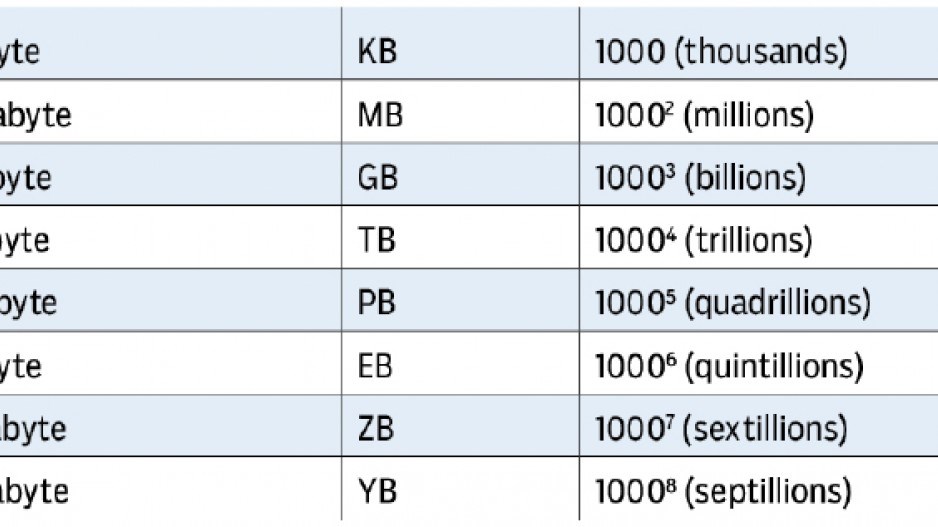According to Oxford Dictionaries, “selfie” – the photos people take of themselves from smartphones and post on social media – topped its 2013 list of buzzwords.
In recent years, words like “cloud” and “emoticon” topped the list. These are still everywhere, but this year I’m hearing a new crop of tech-related terms becoming more popular.
Here’s my top 10 list for the year:
Phablet:
Mobile devices that merge the functionality of a smartphone and tablet with screen sizes of five to 6.9 inches are considered phablets. These have been around for a number of years now, but due to the commercial success of the Samsung Galaxy Note in 2012, the term has become popular in everyday use. I did a search of the U.S. trademark database and found that LG had tried to trademark the term “phablet” in 2011 but abandoned the application.
BYOD (bring your own device):
According to a 2012 Deloitte report, two-thirds of the Canadian workforce uses personal devices for work. That number is expected to grow to three-quarters by 2015. Allowing employees to use their own devices seems like a great idea in terms of employee engagement and potential cost reduction for the company, but there are also privacy issues and concerns over confidential company data. Policies are cropping up at small and large businesses alike. If your business doesn’t have a policy yet, it’s time to start considering one.
Yottabyte:
A yottabyte (YB) is the newest unit of digital data storage being talked about today. (See chart.)
There is nowhere to store this much data at this time because it’s estimated it would require 10 billion city-block-size data centres, the size of Delaware and Rhode Island combined, at a cost of $100 trillion. The amount of data generated worldwide is estimated to have reached four zettabytes as of 2013. That’s a lot of data.
Big data to Dark data:
With so much data now in the world and with it growing exponentially, the term “big data” got a lot of press in 2012 as one of Time Magazine’s top buzzwords. It refers to huge data sets where common software tools used to capture, process, manage, store, analyze and share become difficult in a reasonable time. Those in the big data business, like IBM, look at big data in multiple dimensions: volume (amount), variety (types and sources), velocity (speed of transfer in and out) and veracity (accuracy or integrity of the data). SAP’s definition includes the four dimensions and adds complexity.
In 2013, I heard more about “dark data” – a subset of big data that includes information companies collect, process and store but don’t properly use, analyze or take advantage of to monetize, sometimes costing more to store and secure than the value provided, while other times it could be a gold mine of information if used properly.
Glass:
Google Glass, also known as Project Glass or “Glass” for short, is Google’s wearable computer that allows users to operate a smartphone-like device they wear like glasses and operate using hands-free voice commands.
At present it’s available only to the “Explorer” program, where 10,000 entrants were selected to test early versions of the device (each paying $15,000 to do so). A consumer version is expected to be available this year.
Bitcoin:
A few years ago when I looked at this virtual currency, it still had numerous issues as well as a reputation for being tied to illegal activity. Introduced in 2008 by a developer using the “Satoshi Nakamoto” pseudonym, bitcoin is a new kind of money that uses cryptography to control transactions with no central authority, government or regulatory body.
With a new Bitcoin ATM recently launched in Vancouver and soon to roll out in Calgary, Toronto, Ottawa and Montreal, and a number of merchants now taking this as a form of payment, this may start becoming a mainstream form of currency and more than just a buzz.
3D Printing:
3D printers make three-dimensional solid objects from digital models. Instead of ink, they use a composite material of non-toxic cornstarch to create objects ranging from smartphone cases and toys to guns and organs, according to a recent show I watched online. The prices of these machines have dropped. Some are now available for a few hundred to a few thousand dollars, making them economically viable for homes and small businesses.
Hangouts:
I had been using Google Hangouts as a Google+ feature through 2012, and then in May 2013, Google relaunched Hangouts by integrating Google Talk and Google+ Messenger.
Hangouts allows you to message friends, have private chats and share photos as well as have video chats with up to 10 people. Many businesses are using the video conferencing function to save on travel costs for meetings.
Many are also using Hangouts On Air (HOA) to stream video interviews and webinars, and HOA instantly records and posts them on Google+ and YouTube so they can be shared with the world.
New gTLD or nTLD:
These stand for new generic top-level-domain or new top-level-domains. After many years of debate, public consultation, development and multi-millions in investment by numerous companies around the world, these finally launch this year.
More than 1,400 domains are expected to be launched over the next few years. •




